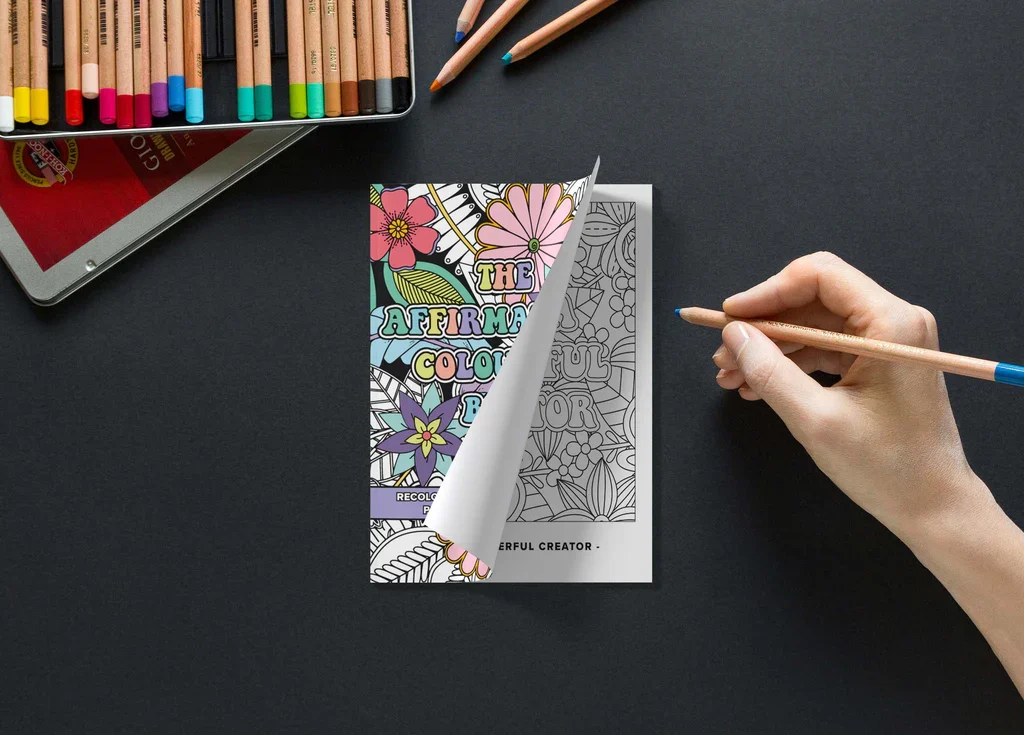On this Page you will find 20 most important benefits of coloring for kids and adults. It will increase your Knowledge for coloring Pages.
Coloring, traditionally seen as an activity for youngsters and a simple pastime, has gained recognition in recent years for its significant benefits to both adults and children. Many now appreciate that this seemingly basic activity offers profound advantages.

Unlocking the Therapeutic Power of Coloring: 20 Proven Benefits
In a world that often feels overwhelming and fast-paced, finding moments of calm and relaxation is essential for maintaining mental and emotional well-being. Coloring, once considered a simple childhood pastime, has emerged as a powerful tool for adults seeking stress relief.
Here, we delve into 20 proven benefits of coloring that highlight its therapeutic value and why you might want to incorporate it into your daily life.
1.Stress Reduction
Coloring has a soothing effect on the mind, helping to reduce stress and anxiety levels by allowing you to focus on the present moment and the repetitive motions of coloring.
2. Mindfulness Practice
Engaging in coloring promotes mindfulness, encouraging you to concentrate on the colors, shapes, and patterns in front of you, which can enhance your ability to stay present and focused.
3. Improved Mood
Coloring triggers the release of endorphins, the body’s natural mood enhancers. It can lift your spirits and increase feelings of happiness and contentment.
4. Enhanced Creativity
Coloring stimulates creativity by allowing you to experiment with different color combinations, shading techniques, and artistic interpretations, fostering creative thinking and problem-solving skills.
5. Fine Motor Skills Development
The precise movements required to color within the lines of intricate designs help improve fine motor skills and hand-eye coordination, especially beneficial for seniors and individuals recovering from injuries.
6. Cognitive Stimulation
Coloring activates both hemispheres of the brain, stimulating areas related to creativity, logic, and problem-solving. It can improve cognitive function and enhance mental clarity.
7. Emotional Expression
Choosing colors and creating art through coloring provides a non-verbal outlet for emotional expression. It allows you to explore and process your emotions in a therapeutic and constructive manner.
8. Self-Discovery
Coloring can reveal insights into your preferences, moods, and personality traits based on the colors and styles you choose. It promotes self-awareness and personal growth.
9. Relaxation Response
Coloring induces a relaxation response in the body, lowering heart rate and reducing muscle tension. It promotes a sense of calmness and tranquility similar to meditation.
10. Social Interaction
Coloring can be a social activity when done in groups or classes. It fosters connections with others, encourages sharing of experiences, and promotes a sense of community.
11. Therapeutic Healing
Engaging in coloring has therapeutic benefits for individuals dealing with trauma, grief, or other emotional challenges. It provides a safe space for processing emotions and promoting healing.
12. Stimulation of Senses
Coloring engages the senses of sight and touch, providing sensory stimulation that can be calming and grounding, especially for individuals with sensory processing issues.
13. Time Management
Coloring can help improve time management skills by encouraging you to dedicate focused time to a relaxing activity. It promotes a healthy balance between work and leisure.
14. Improved Sleep
Coloring before bedtime can help calm the mind and promote better sleep quality. It serves as a bedtime ritual that signals the brain to unwind and prepare for rest.
15. Cultural Appreciation
Coloring books featuring diverse cultures, traditions, and landscapes can foster cultural appreciation and understanding, promoting empathy and global awareness.
16. Achievement and Goal Setting
Completing a coloring page provides a sense of accomplishment and reinforces the satisfaction of setting and achieving goals, no matter how small.
17. Physical Rehabilitation
Coloring can be used as a therapeutic activity in physical rehabilitation settings to improve motor skills, coordination, and dexterity following injuries or surgeries.
18. Educational Tool
Coloring can be an educational tool for learning about shapes, patterns, colors, and themes. It enhances visual perception and spatial awareness in a fun and engaging way.
19. Artistic Appreciation
Coloring allows you to appreciate art and design, whether through intricate mandalas, detailed landscapes, or whimsical illustrations, fostering an appreciation for aesthetics.
20. Life Balance
Ultimately, coloring promotes a balanced lifestyle by encouraging relaxation, creativity, and self-care. It serves as a gentle reminder to prioritize mental and emotional well-being amidst life’s demands.

Embrace the Coloring Journey
In conclusion, coloring pages isn’t just an activity for children—it’s a therapeutic practice with a multitude of benefits for adults of all ages and backgrounds.
Whether you’re seeking stress relief, a creative outlet, or simply a moment of peace in a hectic world, coloring can be a valuable addition to your daily routine.
So, pick up your favorite coloring tools, choose a design that speaks to you, and embark on a journey of self-discovery and relaxation through the therapeutic art of coloring. Your mind, body, and spirit will thank you for it!

